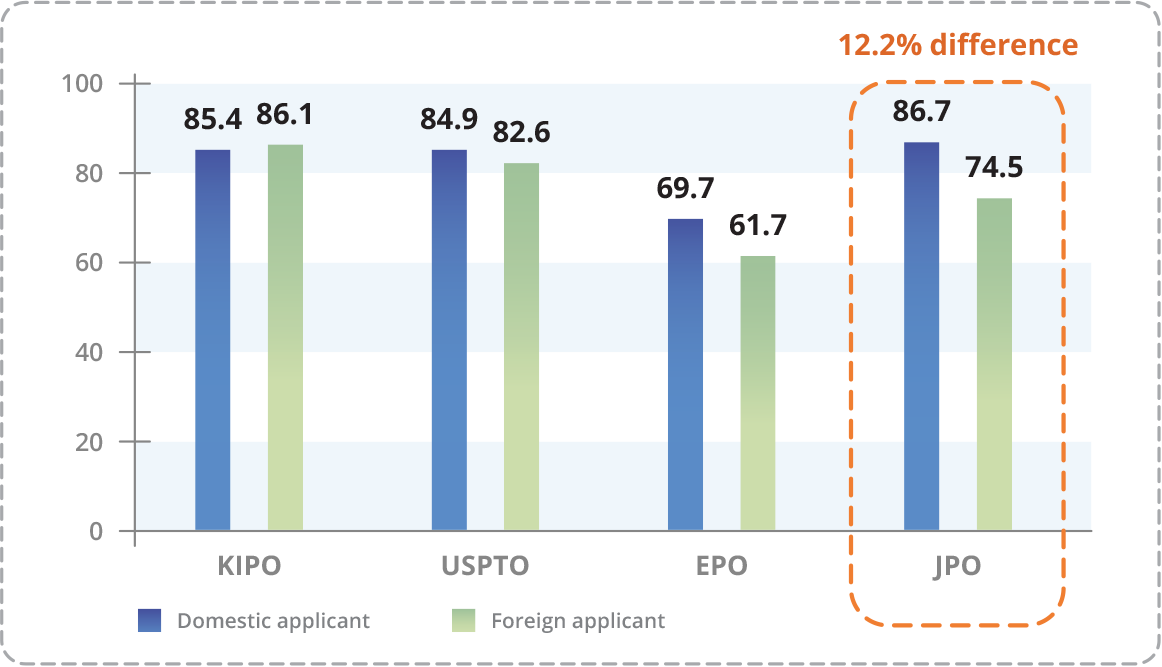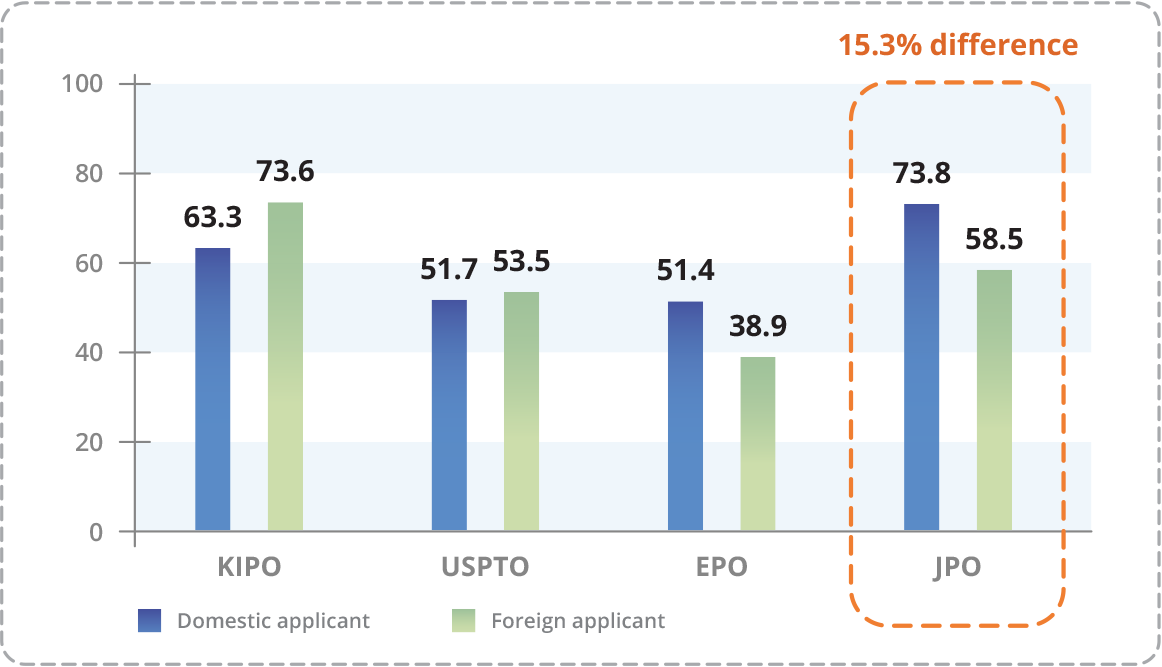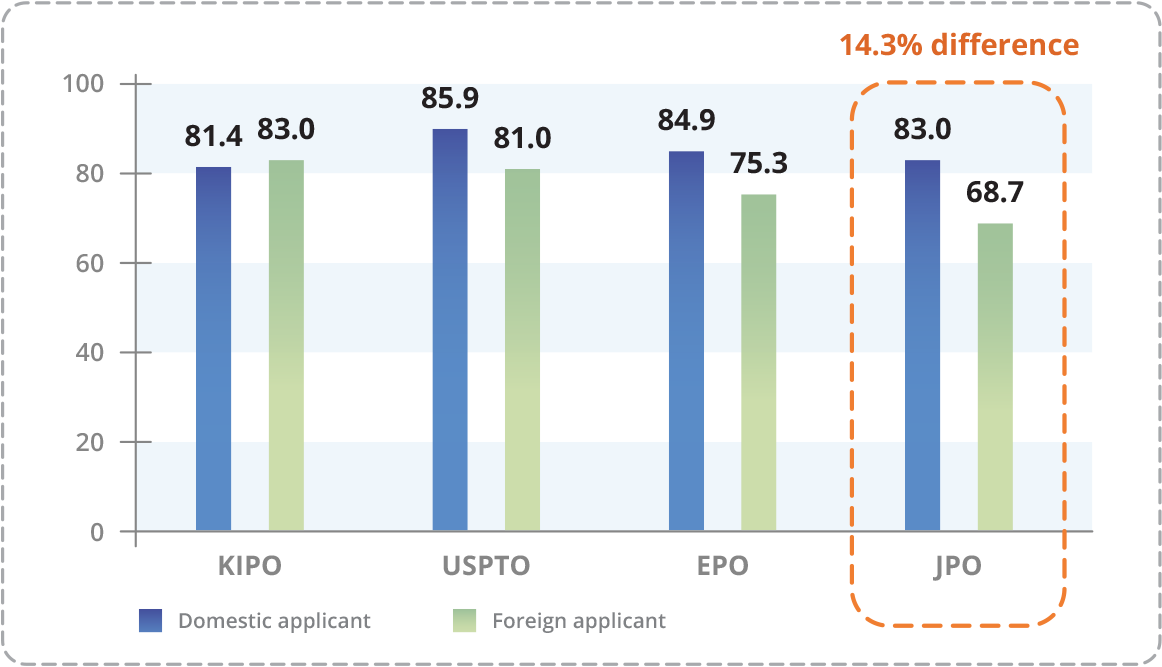Practice Notes Considerations when establishing South Korean patent portfolios
Shortcut to…
Technology Fields / Systems
In this article, we will compare the patent registration rates by technology field in Korea and the other IP5 jurisdictions, and also look at the systems which may be used in establishing a patent portfolio, comparing in particular with the US.
According to the Korean Intellectual Property Office (KIPO), when comparing deviations in patent registration rates in IP5 jurisdictions by technology field (based on the 2010 to 2018 averages), compared with other fields of technology, it is apparent that:
- the United States ranks highly in the fields of communication, audio and video and computing;
- Europe ranks highly in the fields of machinery and automotives;
- China ranks highly in the fields of semiconductors and communications; and
- Japan ranks highly in the fields of chemistry and the materials and components industry.
Both Europe and China rank poorly in the e-commerce field. From this, it can be said that the patent registration rate is high for particular fields in jurisdictions where there is strong competition in that sector. By contrast, South Korea does not display such distinct characteristics as the other IP5 members.
Turning to the field of fourth industrial revolution technology, AI, autonomous vehicles, intelligent robots and digital healthcare have become hot topics in recent years. In the fields of AI, autonomous vehicles and intelligent robots, the registration rate in South Korea is average compared with that of the United States, Europe and Japan. In the digital healthcare field, the registration rate is higher in South Korea than in the United States and Europe and similar to that of Japan. However, unlike Japan, where the registration rate of domestic applicants is higher than that of foreign applicants, the registration rate of foreign applicants is higher in South Korea.
Artificial Intelligence
|
Autonomous Vehicles
|
Digital Healthcare |
Intelligent Robots
|
[Comparison of domestic vs. foreign applicant registration rates for 4th industrial revolution technology (2010-2017 average) | Source: KIPO]
In the United States (particularly after a notice of allowance has been issued), continuation applications may be used to obtain related patents and broaden the scope of rights protection. However, in South Korea only divisional applications are supported and there is no continuation filing system such as continuation or continuation-in-part applications.
Further, in South Korea, it is impossible to file a divisional application after a final rejection has been appealed. Specifically, if an applicant files an appeal which ultimately ends up being rejected, there is no opportunity to file a divisional application thereafter. One particular point of caution is that even if only one rejection reason remains unresolved during the appeal (in other words, not all rejection reasons are resolved), the application is rejected in its entirety. This also applies even if the application contains an allowable invention. Therefore, when an appeal is to be filed against a final rejection, applicants should also consider filing a divisional application in order to secure the opportunity to further prosecute the patent application in case the appeal fails.
In the United States, re-issued patents are actively used in particular by non-practicing entities. With re-registration, it is possible to expand the scope of rights under certain conditions; however, like other IP5 members, South Korea does not allow for change or expansion of the scope of rights after a patent right has been granted.
Written by Young-min KIM



